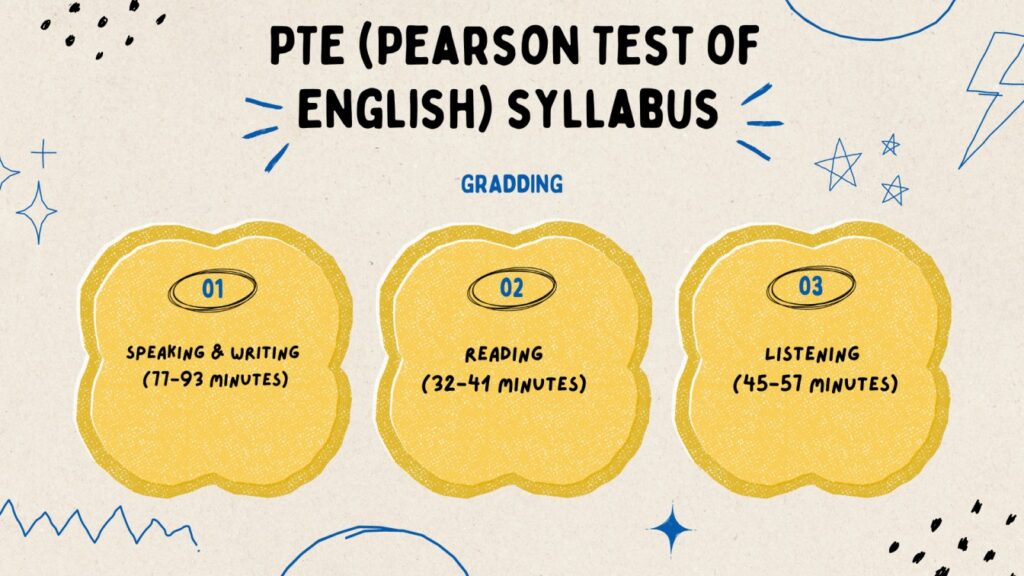
The IELTS and PTE are the most popular tests of English language exams for India students. In both exams, your speaking, writing, reading, and listening skills are assessed. However, in the reading module, there are some specific primary differences that you should know. Perceiving the PTE and IELTS reading syllabus or strategies is helpful.
Further, it guides you to choose the test that best suits your skills and prepare effectively. Thus, this article discusses the differences between the IELTS vs PTE reading syllabuses. Also, see the strategies to excel in each section. Let’s first dive into the syllabus of the IELTS reading part!
Details of the IELTS Reading Syllabus
The purpose of the IELTS reading syllabus is to check your understanding of the English language written texts. You will get sixty minutes to answer forty questions in total. However, it includes three lengthy paragraphs from newspapers, books, magazines, and journals. These phrases have argumentative or discursive materials with factual details. Usually, the questions cover a range of tasks, which are like:
- Match Headings: You have to align the headings in the passage with a paragraphthat justifies it.
- True/False/Not Given:In the passage, you must find if a statement is true, false, or not given in it.
- Multiple-choice Questions: You must select the correct answers from four possible options.
- Complete Sentence: Using details from the text, you must finish the sentences.
- Fill in the Blanks: In this task, you must fill in sentences or summaries by adding missing words.
However, passages in the IELTS academic are complex and call for in-depth analysis. In contrast, general training IELTS reading passages are easy and focus on daily topics. The primary aim is on understanding and skills to draw details from a range of written texts. Also, they check your abilities of grammar and syntax but not directly. In comparison between the IELTS vs PTE syllabus, going with the PTE is also best. Do you have the details of the syllabus for this exam? If not, then check the next part!
Details of the IELTS Reading Syllabus
The PTE reading module has 32 to 41 minutes to check your reading skills. However, five diverse types of questions assess your academic English skills and reading skills. It has tasks such as:
- Rearrange phrases:Re-order the phrases in the correct order by dragging them.
- Multiple-choice (Multiple answers):As per the text, you must choose more than one correct answer.
- Multiple-choice (Single answer):From a range of options, choose a correct answer.
- Fill in the Blanks (Reading):When reading, finish phrases by adding the missing words.
- Fill in the Blanks (Reading & Writing):You have to choose words from a list of words and complete the phrases that have blank spaces.
As compared to IELTS, PTE is more technical because of many reasons. The primary reasons are its focus on sentence-making and vocabulary. Moreover, scoring is computer-based and precise, which penalizes not only incorrect answers but also grammar errors. In it, the texts are usually academic, checking the ability to understand complex topics. Are you looking for some strategies to practice the PTE reading part? If the answer is yes, then don’t wait and move to the below section!
Strategies to Practice PTE Reading
If you want to achieve success in the PTE reading module, then you must learn some crucial skills. These skills are strategic planning, grammar skills, and syntax knowledge. Here are some primary ways to excel in this section:
- Expand Your Syntax Knowledge:Increase your word knowledge for the fill-in-the-blanks tasks.
- Practice Rearranging Phrases:Constant practice supports you in identifying a coherent sentence structure.
- Focusing on Grammar:If you want to avoid fines, make sure your grammar is perfect.
- Managing Your Time:In between distinct writing and reading tasks, balance your time.
- Using Practice Tools:To perform effectively, get familiar with the computerized format.
Thus, with focus and regular practice, you can increase your score in the PTE reading module. In the comparison between IELTS vs PTE, knowing the strategies for the IELTS exam is also crucial. Let’s learn its strategies in the next part!
Strategies to Practice IELTS Reading
If you want to tackle the IELTS reading syllabus, efficient ways to get through a range of tasks are helpful. These strategies are:
- Skim & Scan:You must find crucial details in the text quickly and with ease.
- Use Contextual Hints:Find the answers by understanding the contextual material.
- Know Question Types:You can adapt your study plan as per the question format.
- Practice Using Authentic Texts:Examine academic articles and news stories.
- Time Management:Give each part not more than 20 minutes.
Therefore, by becoming experts in these skills, you can improve your reading abilities and, eventually, your overall IELTS score.
Conclusion
To sum up, choosing between the IELTS reading syllabus and PTE for English tests depends on your interests and strengths. However, PTE is for students who feel at ease with computer-based and short exams and syntax-based questions. In contrast, IELTS may be best for students who favor paper-based exams and offline reading tasks.
Moreover, expert tutors at gradding.com help you to choose the test that is best for you. Also, knowing the syllabus of PTE and IELTS exams will be helpful. It is because you can make tailored strategies for practice that will improve your performance and self-assurance. In short, you will get the score you require to meet your career or study goals.




